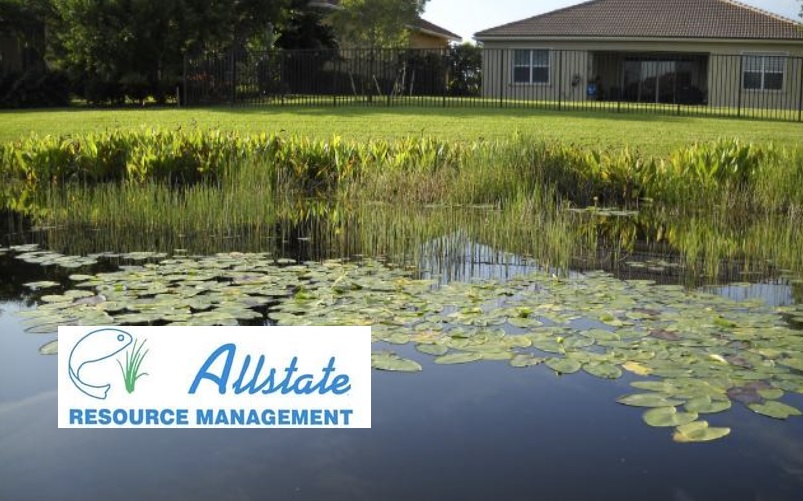Condo and HOA Lien Foreclosures…A National Shame
How many times have you read a story about an HOA foreclosing on some unfortunate family for a fraction of the value of the home? For example, the veteran who, upon returning from active duty, finds that his HOA has foreclosed and taken title to his house for a mere pittance? “Soldier in Iraq Loses Home Over $800 Debt” reads the story, and life goes on at the HOA.
Should the HOA have foreclosed on this person’s house? Why did they foreclose on this property? What could have been done to prevent this gross injustice from happening in the first place? Condo and HOA lien foreclosures should not be the first go-to solution when a unit becomes delinquent.
For too long, community associations have been a national disgrace, rather than a source of national pride. No HOA wants their name to be mentioned on the nightly news because we all know it is far more likely to be an exposé than a feel-good piece. But if we want the bad press to stop, we need to take a good, hard look in the mirror.
Communities Often Jump Straight to the Nuclear Option of Lien Foreclosure. Can They Do That?
When you buy a house or condo in a community association, most likely you’ve taken out a mortgage, and if you don’t pay your mortgage, the lender has the right to foreclose and force a public sale of the property. So too can condominiums and homeowner’s associations foreclose on your property for non-payment of maintenance fees.
In fact, per most state laws, your homeowner’s association or condominium association can potentially foreclose on your property even if you are current with your mortgage. Also, your mortgage will remain in first position and the HOA cannot sell the property with marketable title unless the first position lien has been satisfied.
All that is required is for the association to cause an attorney to file a lien, have the attorney send a notice of foreclosure, have your day in court, and before you know it you are being evicted from your home that may have equity in it because you were delinquent for a much smaller amount than what the property is worth. Not a good deal for you and certainly not a smart business move for the association.
It’s not to say that the community is in the wrong. The assessment fees are rightfully owed to the association, and they have the right to attempt to collect it. However, jumping to the nuclear option prior to attempting diplomacy (negotiating with the owner to satisfy the debt) never goes well for anyone.
Winrose vs Hale ‘Shocked the Conscience’ of the Court
In an appeals court decision in Supreme Court South Carolina, the association foreclosure was REVERSED and REMANDED. In the case of WINROSE HOA v. DEVERY HALE the court was shocked by this action and even stated so in their decision: “As a result, in determining whether the purchase price was grossly inadequate …. the bid shocks the conscience of the court.” The story is quite simple and may sound familiar to you as this happens every day and really should not.
The Hales were solid citizens who purchased their home twenty-one years ago for $104,250.00 and paid their mortgage and fees on time. The home is valued at $128,000.00 and the property has $60,000.00 of equity in it. After missing a $250.00 maintenance fee payment the HOA foreclosed on their $566.41 lien (to satisfy delinquent assessments and interest) and the winning bid on the house was $3,036.00. The Hales had been robbed, and the association had acted too rashly in moving to foreclose upon a house for such a pittance. The buyer was Regime Solutions, LLC who are investors that seek out and purchase properties at foreclosures.
Due to the Hales failure to file a responsive pleading to the foreclosure complaint, a huge mistake on their part, they were ultimately defaulted and were not served with any further court papers. In fact, they did not even receive a copy of the judgment of foreclosure. When they found out they were at risk of losing their property, they tried to make good to redeem their house and paid a bill to the master and in fact, the law firm representing the HOA sent the Hales a notice that the lien had been satisfied. The HOA, however, did not withdraw its suit.
Three months after, the HOA filed the affidavit of default and the master authorized a judicial sale of the property at public auction. The Hales were not notified of this order due to a rule in South Carolina, which essentially states the time to appeal doesn’t change, despite lack of notice (rule 77(d), SCRCP). Two weeks later without notice to the Hales, the property was sold and the new owner moved to evict them. This of course led to court complaints, a trial, and finally an appeal before the Supreme Court who reversed and remanded the foreclosure order saying that the sale at auction for $3,036.00 “shocked the conscience of the court,” which is quite strong language from the Supreme Court.
Investors Use Shady Business Practices To Take Advantage of Unsuspecting Homeowners through HOA foreclosures
It came to light that Regime’s business model was not to assume the senior mortgage to own the property but to give back the property to the original owners at a hefty fee. (Sadly, this is not an uncommon practice.)
The court decision went on to say: “While the HOA had the legal right to pursue collection of the debt owed, including foreclosure of the Property to satisfy that debt, this foreclosure action quickly morphed into a proxy to capitalize on a small debt. We are especially troubled by Regime’s participation in a foreclosure proceeding to accommodate its business model of leveraging a nominal debt to secure an exorbitant return from homeowners who fear the prospect of eviction.”
Most important the court stated: “Regime would not have had an opportunity to engage in its questionable business practices had the HOA and its attorney not chosen to pursue foreclosure in the first place. The Hales were minimally in arrears on their HOA dues, yet the HOA foreclosed on a $128,000 home in its eagerness to collect the outstanding $250—an overdue amount less than 0.2% of the fair market value of the home, notwithstanding the amount of the outstanding mortgage.”
Finally, the court opined: “A foreclosure proceeding is a last resort, not a business model to be swiftly invoked for the purpose of exploiting property owners. We do not countenance the improper use of foreclosure proceedings by the HOA, its attorney, or Regime.”
Justice ultimately prevailed in this case, and the Hales kept their house and were not evicted although there can be no doubt that they had suffered and worried throughout this entire process. Not every homeowner who goes through this process is so lucky to get away with only a terrible story to tell.
Communities Are Getting Bad Advice, and It’s Costing Them, in Real Dollars and in Reputation
What went wrong is an amazingly simple question to answer. The association was convinced that they should foreclose on a delinquent unit before they even tried to engage the owners to review the consequences of their situation. While it may be true that they received one notice, they were advised by an attorney that the matter had been resolved. This was a total failure of communication.
The association could have had more contact with the owners and advised them as to the course of action that was being taken against them. Nobody said anything to them – and in this industry, such a thing is not uncommon.
When a delinquent unit goes over to an attorney the object is to “enforce the security interest” and not to collect. The association’s board was not properly informed that less drastic action could be taken. Somehow the board was convinced not to recover money from the Hales but rather to take the property.
No collections activity is reported in the narrative that is presented in the case. It was a bad business decision because eventually, the association had to pay a lot of legal fees. This situation could have been resolved much more easily and cost-effectively.
A Lawyer Who is Just Enforcing Security Interests Is Not A Debt Collector
This matter did not have to be resolved by a “legal solution” but rather by a “collections solution.” As a matter of fact, in a case decided by the Supreme Court of The United States, DENNIS OBDUSKEY v. McCARTHY & HOLTHUS LLP the Court held, “A business engaged in no more than the enforcement of security interests is not a “debt collector” under the FDCPA, 1032*1032 except for the limited purpose of § 1692f(6). Pp. 1035-1040.” This means that the association did not even try to collect the past due debt and if they used an attorney, he/she is not even bound by the Fair Debt Collections Practices Act.
The Supreme Court in South Carolina in all its wisdom said loud and clear: “A foreclosure proceeding is a last resort”
So how should a community association collect delinquent fees? In a way this question just about answers itself. The answer is that they use a collection agency that is specialized in collections for community associations. Community Associations need to COLLECT, not foreclose and evict owners from their homes. Associations need to have adequate cash flows and a minimum amount of legal cases.
Axela Technologies would be honored to be that company for your community association. We are a licensed collection agency and we only work on delinquencies from Condos and HOAs. We are different because our objective is not to foreclose on a house, which is the action of last resort.
What Axela does is engage the owner and work with them to pay their past due assessments. Axela will send demand letters, provide internet portals to delinquent owners, make outbound calls, report delinquencies to credit bureaus, receive inbound calls, work out payment plans, and notice mortgage holders that the borrower is delinquent on their maintenance fee payments as per the PUD Rider.
Now is the time for your community association management company and/or community association to put the right process into place when you are confronted with delinquencies. Foreclosing and evicting does not have to be the way. Click here to request your free, no-obligation collections analysis today.
Tags:
Collections,
Condo and HOA,
Management News
 As you know, I have been writing a blog 50 times per year for the last 10 years. That’s over 500 columns that have spoken about virtually every aspect of community association living. Our readers love it. The only complaint about the blog was that it was not searchable by topic. It was difficult to find a specific blog about a specific topic. Not any more! From now on, by going to either the website for Glazer and Sachs,
As you know, I have been writing a blog 50 times per year for the last 10 years. That’s over 500 columns that have spoken about virtually every aspect of community association living. Our readers love it. The only complaint about the blog was that it was not searchable by topic. It was difficult to find a specific blog about a specific topic. Not any more! From now on, by going to either the website for Glazer and Sachs,

















 Lake and pond management is a complex field that presents never-ending puzzles and surprising challenges. Like a fingerprint, no two bodies of water are exactly the same—and they are always in a state of continuous change based on how the water is used, the surroundings, and even the weather. When diagnosing and designing a solution for a problem like bad odors or nuisance
Lake and pond management is a complex field that presents never-ending puzzles and surprising challenges. Like a fingerprint, no two bodies of water are exactly the same—and they are always in a state of continuous change based on how the water is used, the surroundings, and even the weather. When diagnosing and designing a solution for a problem like bad odors or nuisance 
 By: Stephen Montgomery
By: Stephen Montgomery